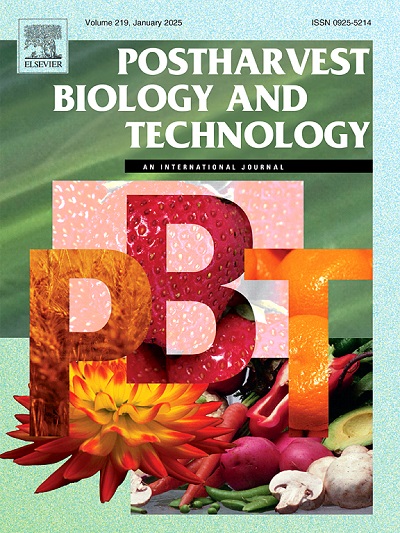The key pathogenic factor GcSP2 of Geotrichum citri-aurantii plays an important role in disrupting citrus metabolism and immunity
IF 6.4
1区 农林科学
Q1 AGRONOMY
引用次数: 0
Abstract
The pathogen Geotrichum citri-aurantii (G. citri-aurantii) causes postharvest sour rot disease in citrus fruits worldwide, severely impacting citrus economic value. However, the pathogenic mechanisms of this fungus remain inadequately understood. Here, we identified 15 candidate effector proteins from G. citri-aurantii genome, of which five were highly expressed during infection and were capable of suppressing BAX-induced cell death, indicating their role in inhibiting plant immunity. Gene expression analysis showed that these five effector proteins primarily induced the upregulation of pattern-triggered immunity (PTI)-related gene expression. Diaminobenzidine (DAB) staining results indicated that only GcSP2 triggered reactive oxygen species (ROS) burst. Notably, GcSP2 contains a known carbohydrate-binding module 1 (CBM1) domain and exhibits low overall conservation. Gene knockout experiments revealed that the absence of GcSP2 delayed disease onset by 1–2 days and significantly reduced lesion size, establishing it as a key pathogenic factor. Assessments of total phenols, flavonoids, and pathogenesis-related protein expression indicated that GcSP2 significantly affects citrus metabolism at 72 hours post-infection.
柑橘疫霉菌(Geotrichum citri-aurantii)的关键致病因子 GcSP2 在破坏柑橘新陈代谢和免疫方面发挥着重要作用
柑橘酸腐病病原菌(Geotrichum citri-aurantii,G. citri-aurantii)在全球范围内引起柑橘采后酸腐病,严重影响柑橘的经济价值。然而,人们对这种真菌的致病机制仍然了解不足。在此,我们从 G. citri-aurantii 基因组中发现了 15 个候选效应蛋白,其中 5 个在感染过程中高表达,并能抑制 BAX 诱导的细胞死亡,表明它们在抑制植物免疫中的作用。基因表达分析表明,这五种效应蛋白主要诱导模式触发免疫(PTI)相关基因表达上调。二氨基联苯胺(DAB)染色结果表明,只有 GcSP2 能引发活性氧(ROS)猝灭。值得注意的是,GcSP2 含有一个已知的碳水化合物结合模块 1(CBM1)结构域,且整体保存率较低。基因敲除实验表明,GcSP2 的缺失会使发病时间延迟 1-2 天,并显著缩小病变范围,从而确定它是一个关键的致病因素。对总酚、类黄酮和致病相关蛋白表达的评估表明,GcSP2 对柑橘感染后 72 小时的新陈代谢有显著影响。
本文章由计算机程序翻译,如有差异,请以英文原文为准。
求助全文
约1分钟内获得全文
求助全文
来源期刊

Postharvest Biology and Technology
农林科学-农艺学
CiteScore
12.00
自引率
11.40%
发文量
309
审稿时长
38 days
期刊介绍:
The journal is devoted exclusively to the publication of original papers, review articles and frontiers articles on biological and technological postharvest research. This includes the areas of postharvest storage, treatments and underpinning mechanisms, quality evaluation, packaging, handling and distribution of fresh horticultural crops including fruit, vegetables, flowers and nuts, but excluding grains, seeds and forages.
Papers reporting novel insights from fundamental and interdisciplinary research will be particularly encouraged. These disciplines include systems biology, bioinformatics, entomology, plant physiology, plant pathology, (bio)chemistry, engineering, modelling, and technologies for nondestructive testing.
Manuscripts on fresh food crops that will be further processed after postharvest storage, or on food processes beyond refrigeration, packaging and minimal processing will not be considered.
 求助内容:
求助内容: 应助结果提醒方式:
应助结果提醒方式:


